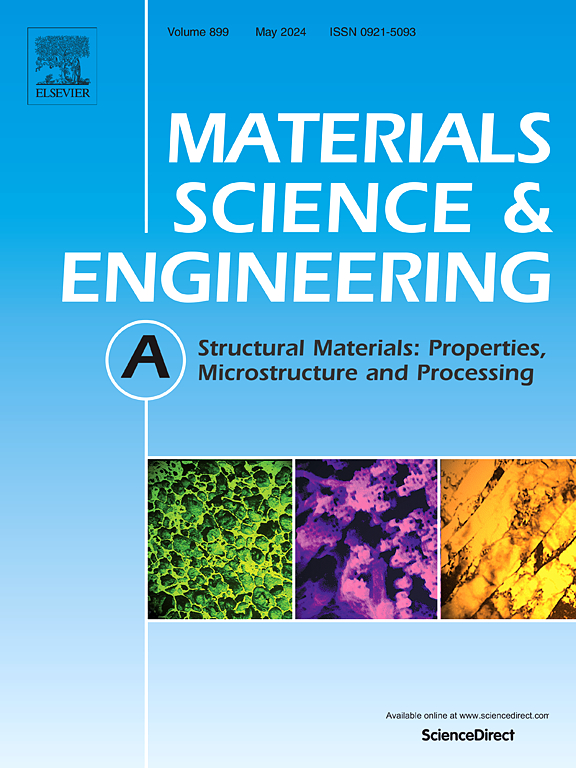激光粉末床熔合中的相显微结构工程:以钛合金为例
IF 7
2区 材料科学
Q1 MATERIALS SCIENCE, MULTIDISCIPLINARY
引用次数: 0
摘要
钛合金具有低弹性模量和卓越的生物相容性,使其成为生物医学承重应用的理想选择。然而,在低周疲劳条件下,由于Ti和Ta的熔点差异较大,钛合金屈服强度较低,成分偏析严重,容易引发裂纹形成和机械失效。相结构对合金的性能起着至关重要的作用。为了进一步提高钛合金的强度,复合相结构的形成和Ta在Ti基体中的高溶解度是必不可少的。在这项工作中,采用激光粉末床熔融(LPBF)技术成功制备了具有细胞β相基质和颗粒内网状α″相的致密Ti-60 (wt%) Ta样品,具有良好的成形性。结果表明,该材料具有均匀而精细的微观结构,平均晶粒尺寸为~ 4.16 μm。LPBF钛合金的弹性模量为73.64±4.8 GPa,抗拉屈服强度为1131.89±27.01 MPa,伸长率为12.68±1.17%,优于其他LPBF多元素生物医学β相钛合金。细化的组织、固溶强化和独特的网状复合相使其具有优异的力学性能。本文介绍了具有良好性能的复合相钛合金,并阐明了其均匀组织和强化机理。本文章由计算机程序翻译,如有差异,请以英文原文为准。
Phase microstructure engineering in laser powder bed fusion: A case study in TiTa alloys
TiTa alloys exhibit a low elastic modulus and exceptional biocompatibility, making them ideal for biomedical load-bearing applications. However, the relatively low yield strength and severe compositional segregation in TiTa alloys, caused by the large melting point difference between Ti and Ta, can initiate crack formation and mechanical failure under low-cycle fatigue conditions. The phase structure plays a vital role in determining alloy properties. To further enhance the strength of TiTa alloys, both the formation of a composite-phase structure and the high solubility of Ta in the Ti matrix are essential. In this work, dense Ti-60 (wt%) Ta specimens featuring cellular β-phase matrices and an intragranular network-like α″ phase with excellent formability were successfully fabricated using the laser powder bed fusion (LPBF) technique. The results reveal a homogeneous and refined microstructure, with an average grain size of ∼4.16 μm. The LPBF TiTa alloys exhibited an elastic modulus of 73.64 ± 4.8 GPa, a tensile yield strength of 1131.89 ± 27.01 MPa, and an elongation of 12.68 ± 1.17 %, outperforming other LPBF multi-element biomedical β-phase titanium alloys. The excellent mechanical properties are attributed to the refined constructure, solution strengthening, and the unique network-like composite phase. This work presents the composite-phase TiTa alloys with promising performance and elucidates the homogeneous microstructure and strengthening mechanisms.
求助全文
通过发布文献求助,成功后即可免费获取论文全文。
去求助
来源期刊

Materials Science and Engineering: A
工程技术-材料科学:综合
CiteScore
11.50
自引率
15.60%
发文量
1811
审稿时长
31 days
期刊介绍:
Materials Science and Engineering A provides an international medium for the publication of theoretical and experimental studies related to the load-bearing capacity of materials as influenced by their basic properties, processing history, microstructure and operating environment. Appropriate submissions to Materials Science and Engineering A should include scientific and/or engineering factors which affect the microstructure - strength relationships of materials and report the changes to mechanical behavior.
 求助内容:
求助内容: 应助结果提醒方式:
应助结果提醒方式:


